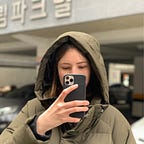The Skin: A big think
“Design a way to represent the skin & world interface”
Group members🤝: Maria Shuttleworth, Alex Newson, Qendresa Selimi and Shiwen Shen (Svaney).
<<< Previous project found here: The Human Senses: Presentation.
During our first group call we decided that we should spend the first week of this 2-week project each coming up with our own interpretation of the brief, but with one particular constraint:
“Skin in the context of a pandemic”.
Right now we have to wear face masks for everyone’s safety. Not only do we not know if we are infected, but others around us could be infected too. A face mask does not offer 100% protection, but it makes sense (especially when paired with hand sanitiser) when everything and everyone is presumed to be contaminated.
Face masks, however, takes away a lot of communication normally found very easy e.g. smiling, frowning, etc. Even other emotions that we personally can’t help (e.g. blushing, under-eye circles) help communicate a message to others that is good for situational context. This change of state in the skin is blocked off from the world by a mask.
Given that showing emotion is important both to yourself and others around you — self-development is rooted in the experience of the skin — we started thinking about possible ways we could communicate both emotions and states of well-being through this new face mask barrier.
My first prototype sketches:
Although I would be creating a paper prototype, this mask would ideally have a digital display, taking on the expressive function of the skin. Muscle movement in the face would activate the correlating emotion to display on the mask.
- The mask is our new-found barrier — (the skin was already a barrier between us & the world (+ vice versa), but now we’re having to wear this new one everyday)
- Masks have become our second skin (in addition to clothing).
Additionally, someone not wearing a mask:
- could be communicating ignorance (or a breathing problem)
- could be viewed as contaminated, as in a pandemic skin is presumed to be dirty & dangerous
Our prototypes.
The “Emotion Mask” — by me.
As described above, my prototype was a low-fidelity “emotion-mask”, helping to bridge the communication gap that masks have created.
A closer look at the skin — by Qendresa.
Qendresa created a magnifying glass that looked at the skin from up-close, and also looked into the negative effect of using too much hand-sanitiser, given how much it dries out our skin.
The textures of emotion — by Svaney.
Svaney created a glove with patches of different textures on the on the fingertips, each one representing a different emotion.
An emotion-signalling device — by Alex.
Worn on the arm, this design was created with the intention of being able to change from red, orange or green to display your general emotion at the time.
Feedback.
After we showed our ideas to the class, we got some important feedback:
- The mask and arm idea were liked, but thought should be combined to be more effective
- The 3 colours on the arm model was a bit too basic — need to think about a wider variety of hues and shades
- The textures on the gloves could be considered in the context of treatment — touching different textures to help you calm down
- The hand idea was thought to be a bit too literal, need to think about what other materials could convey the same idea (to conceal & reveal)
Now, after the feedback, we need to think of other ways of expressing / combining our ideas.
Part 2 of this project in my next post: The Skin: Presentation time >>>
References.
- Hancock, E., 1995. The Handy Guide to Touch. John Hopkins Magazine, [online] Available at: <https://pages.jh.edu/jhumag/495web/touch.html> [Accessed 18 November 2020].
- Lafrance, M., 2018. Skin Studies: Past, Present and Future. Body & Society, 24(1–2), 3–32.
- Kellett, H., 2017. Skin Portraiture: Embodied Representations in Contemporary Art. Electronic Thesis and Dissertation Repository,.
- Jack, R., Garrod, O. and Schyns, P., 2014. Dynamic Facial Expressions of Emotion Transmit and Evolving Hierarchy of Signals over Time. Current Biology, 24(2), pp.187–192.
- Donaldson, M., 2017. Plutchik’s Wheel Of Emotions — 2017 Update • Six Seconds. [online] Six Seconds. Available at: <http://www.6seconds.org/2017/04/27/plutchiks-model-of-emotions/>.
